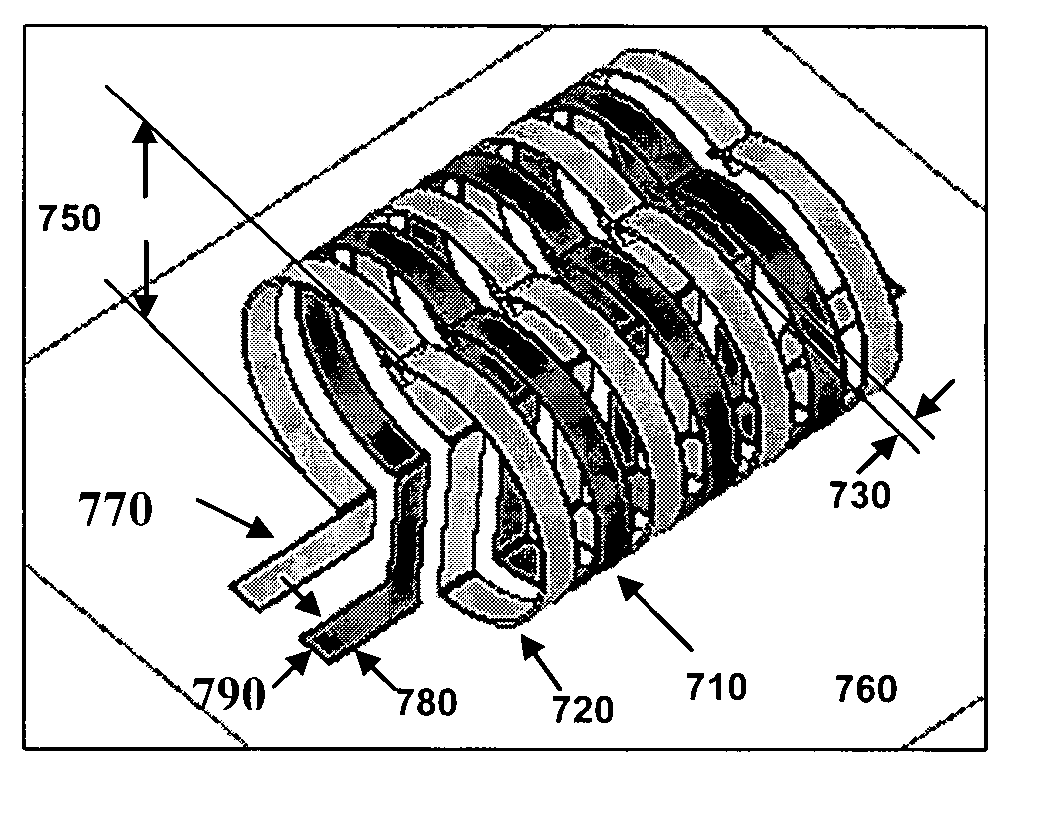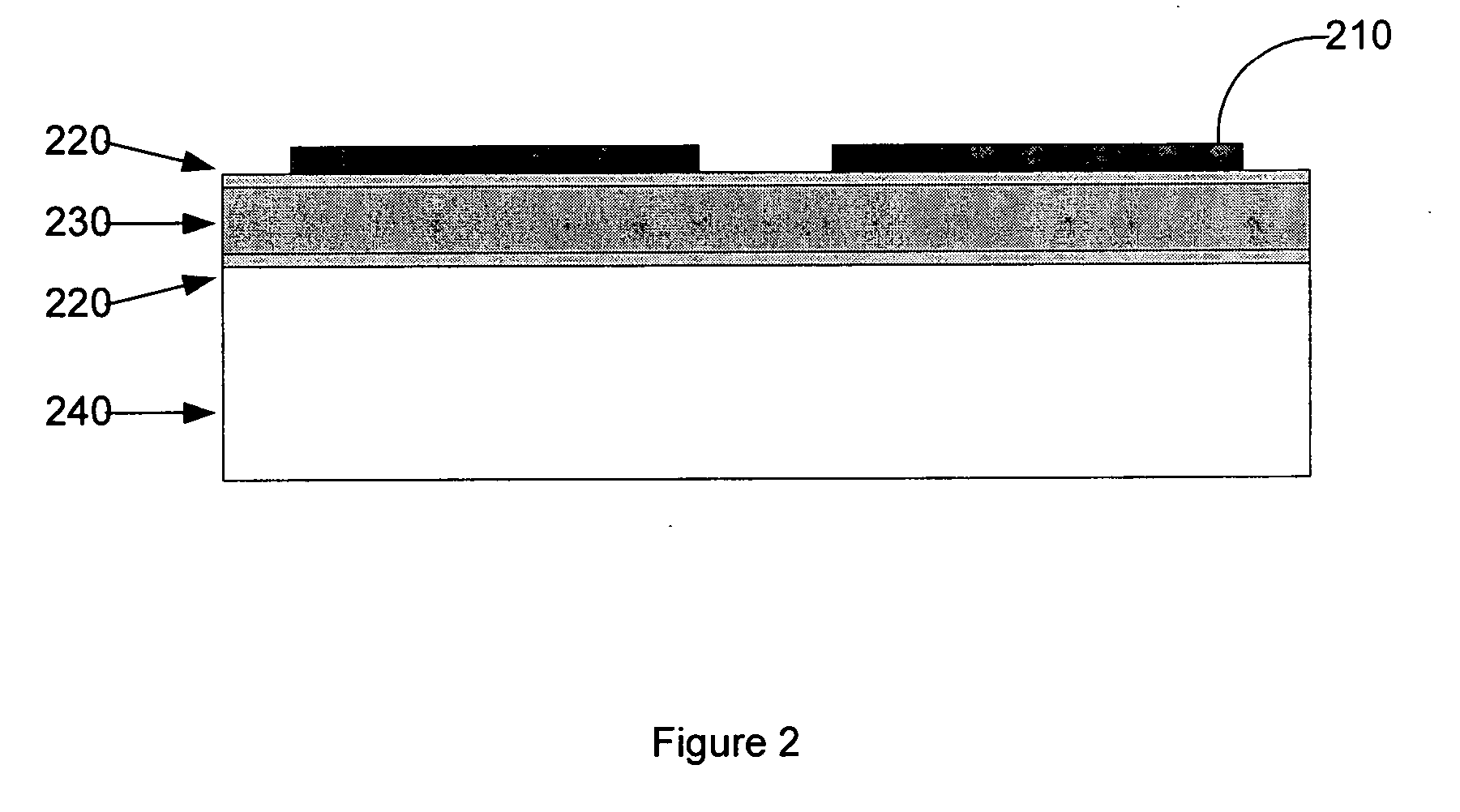3-D transformer for high-frequency applications
- Summary
- Abstract
- Description
- Claims
- Application Information
AI Technical Summary
Benefits of technology
Problems solved by technology
Method used
Image
Examples
Embodiment Construction
[0026]FIG. 1 presents a fabrication process for producing a high-Q, three-dimensional inductor or transformer. A sacrificial layer of photo-resist 210 (see FIG. 2) is deposited, at block 110, using semiconductor photolithographic processing equipment, on a pre-processed silicon substrate 240. This pre-processed substrate may comprise high resistivity silicon 240, silicon dioxide (SiO2) 220, or high dielectric constant materials such as SU-8™230. The photo-resist 210 may be a negative or positive-type photo-resist, as needed to operate with the photolithography process. The photo-resist 210 may be a polymer sensitive to certain wavelengths of light, typically ultraviolet radiation. A mask plate (not shown) that embodies an image of the structures to print on the circuit may be placed above the photo-resist layer 210 and the photo-resist is exposed to an ultraviolet light. The exposed resist may be developed in a solution. The solution may be a base such as potassium hydroxide (KOH). ...
PUM
| Property | Measurement | Unit |
|---|---|---|
| Electrical conductivity | aaaaa | aaaaa |
| Diameter | aaaaa | aaaaa |
| Structure | aaaaa | aaaaa |
Abstract
Description
Claims
Application Information
 Login to View More
Login to View More - R&D
- Intellectual Property
- Life Sciences
- Materials
- Tech Scout
- Unparalleled Data Quality
- Higher Quality Content
- 60% Fewer Hallucinations
Browse by: Latest US Patents, China's latest patents, Technical Efficacy Thesaurus, Application Domain, Technology Topic, Popular Technical Reports.
© 2025 PatSnap. All rights reserved.Legal|Privacy policy|Modern Slavery Act Transparency Statement|Sitemap|About US| Contact US: help@patsnap.com



